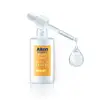What's inside
What's inside
 Key Ingredients
Key Ingredients

 Benefits
Benefits

 Concerns
Concerns

 Ingredients Side-by-side
Ingredients Side-by-side

Water
Skin ConditioningMandelic Acid
AntimicrobialMethylpropanediol
SolventAminomethyl Propanol
BufferingSodium Hyaluronate
HumectantXanthan Gum
EmulsifyingDisodium EDTA
Citric Acid
BufferingLactic Acid
BufferingAscorbyl Glucoside
AntioxidantPEG-40 Hydrogenated Castor Oil
EmulsifyingPolysorbate 20
EmulsifyingMelaleuca Alternifolia Leaf Oil
AntioxidantSalicylic Acid
MaskingPhenoxyethanol
PreservativeSodium Metabisulfite
AntioxidantWater
Skin ConditioningGlycerin
HumectantButylene Glycol
HumectantSodium Ascorbyl Phosphate 2%
AntioxidantNiacinamide 2%
SmoothingUrea
BufferingBetaine 1%
HumectantBiosaccharide Gum-1
HumectantEthoxydiglycol
HumectantPhenoxyethanol
PreservativeCitric Acid
BufferingCarbomer
Emulsion StabilisingAllantoin
Skin ConditioningXanthan Gum
EmulsifyingParfum
MaskingTriethylene Glycol
MaskingAminomethyl Propanol
BufferingDisodium EDTA
Sodium Metabisulfite
AntioxidantHydrogenated Lecithin
EmulsifyingCI 15985
Cosmetic ColorantGlycine Soja Sterols
EmollientSodium Polygamma-Glutamate
Emulsion Stabilising2-Aminobutanol
BufferingChlorphenesin
AntimicrobialWater, Glycerin, Butylene Glycol, Sodium Ascorbyl Phosphate 2%, Niacinamide 2%, Urea, Betaine 1%, Biosaccharide Gum-1, Ethoxydiglycol, Phenoxyethanol, Citric Acid, Carbomer, Allantoin, Xanthan Gum, Parfum, Triethylene Glycol, Aminomethyl Propanol, Disodium EDTA, Sodium Metabisulfite, Hydrogenated Lecithin, CI 15985, Glycine Soja Sterols, Sodium Polygamma-Glutamate, 2-Aminobutanol, Chlorphenesin
 Reviews
Reviews

Ingredients Explained
These ingredients are found in both products.
Ingredients higher up in an ingredient list are typically present in a larger amount.
Aminomethyl Propanol is used to adjust the pH of products. It is also used as a base to create other organic compounds. Having a balanced pH is important for protecting your skin.
Aminomethyl propanol is safe to use in cosmetics up to 1%. It is soluble in water.
Citric Acid is an alpha hydroxy acid (AHA) naturally found in citrus fruits like oranges, lemons, and limes.
Like other AHAs, citric acid can exfoliate skin by breaking down the bonds that hold dead skin cells together. This helps reveal smoother and brighter skin underneath.
However, this exfoliating effect only happens at high concentrations (20%) which can be hard to find in cosmetic products.
Due to this, citric acid is usually included in small amounts as a pH adjuster. This helps keep products slightly more acidic and compatible with skin's natural pH.
In skincare formulas, citric acid can:
While it can provide some skin benefits, research shows lactic acid and glycolic acid are generally more effective and less irritating exfoliants.
Most citric acid used in skincare today is made by fermenting sugars (usually from molasses). This synthetic version is identical to the natural citrus form but easier to stabilize and use in formulations.
Read more about some other popular AHA's here:
Learn more about Citric AcidDisodium EDTA plays a role in making products more stable by aiding other preservatives.
It is a chelating agent, meaning it neutralizes metal ions that may be found in a product.
Disodium EDTA is a salt of edetic acid and is found to be safe in cosmetic ingredients.
Learn more about Disodium EDTAPhenoxyethanol is a preservative that has germicide, antimicrobial, and aromatic properties. Studies show that phenoxyethanol can prevent microbial growth. By itself, it has a scent that is similar to that of a rose.
It's often used in formulations along with Caprylyl Glycol to preserve the shelf life of products.
Sodium metabisulfite is also known as Sodium Pyrosulfite. It is a preservative, antioxidant, and disinfectant.
As a preservative, it helps stabilize cosmetic formulas without affecting their color or scent.
Water. It's the most common cosmetic ingredient of all. You'll usually see it at the top of ingredient lists, meaning that it makes up the largest part of the product.
So why is it so popular? Water most often acts as a solvent - this means that it helps dissolve other ingredients into the formulation.
You'll also recognize water as that liquid we all need to stay alive. If you see this, drink a glass of water. Stay hydrated!
Learn more about WaterXanthan gum is used as a stabilizer and thickener within cosmetic products. It helps give products a sticky, thick feeling - preventing them from being too runny.
On the technical side of things, xanthan gum is a polysaccharide - a combination consisting of multiple sugar molecules bonded together.
Xanthan gum is a pretty common and great ingredient. It is a natural, non-toxic, non-irritating ingredient that is also commonly used in food products.
Learn more about Xanthan Gum